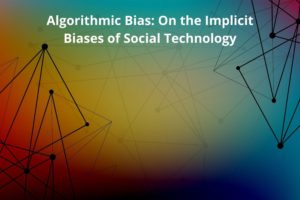Challenges in using ChatGPT, from OpenAI, in medicine are numerous. The most serious one being that, while it’s answers can sound correct and authoritive, even citing numerous references, it’s not always right. The data can be biased, or just plain wrong. ChatGPT uses Large Language Models (LLMs). And it’s only got information that is accurate until the year 2021. It doesn’t search the internet and you cannot direct it to use specific sources, as in only using as peer-reviewed journals. So it’s really “physician beware”.
 A little more on bias. Jeff Peck of SearchEngineLanding wrote, “For example, if you trained a language model on average reviews of the movie “Waterworld,” you would have a result that is good at writing (or understanding) reviews of the movie “Waterworld.” If you trained it on the two positive reviews that I did of the movie “Waterworld,” it would only understand those positive reviews.” Most generative AI have only been exposed to 10 – 20% of the information available on the internet. Hence, bias comes from the choices made by humans on what data the GPT is trained on. And humans have biases.
A little more on bias. Jeff Peck of SearchEngineLanding wrote, “For example, if you trained a language model on average reviews of the movie “Waterworld,” you would have a result that is good at writing (or understanding) reviews of the movie “Waterworld.” If you trained it on the two positive reviews that I did of the movie “Waterworld,” it would only understand those positive reviews.” Most generative AI have only been exposed to 10 – 20% of the information available on the internet. Hence, bias comes from the choices made by humans on what data the GPT is trained on. And humans have biases.
However, areas where it could excel, include:
Summarizing data: This could be useful for summarizing lengthy and extensive patient charts. Especially when providing medical information to other healthcare professionals and insurance companies.
Virtual Health Care: This is especially of interest to patients who live in rural areas with limited access to healthcare, or those with mobility issues who are challenged to attend appointments in person. However, at least in Ontario, pharmacists having extended authority for prescribing for certain conditions and access to telehealth make this less important.
If you trust it, ChatGPT is capable of providing personalized treatment plans for patients, considering the patient’s specific needs and preferences. We think that a more likely scenario is that ChatGPT ‘listens’ (records) the patient encounter and then provides a summary of the physician’s comments and instructions. This would go a long way towards patients remembering accurately what was discussed in the encounter, and likely would lead to improved compliance with physicians’ instructions.
It can also be used to summarize a patient encounter and enter it into an EMR. For example Well Health has announced an AI Voice software, which is described by the company as an “ambient scribe” which listens to the patient encounter and generates a “succinct and medically relevant chart note.” It’s currently integrated with OSCAR Pro for testing.
But as we’ve already discussed in a previous article, ChatGPT is only current as of 2021. Any new information would have to be entered or provided to the system.
Dealing with the ever mounting mounds of paperwork, ChatGPT is also capable of writing letters, and perhaps even capable of filling in forms for employee health, insurance and camp physicals. One example of this is a physician who asked it to write a letter to an insurance company to approve an echocardiogram for a patient with scleroderma. It even provided two medical references to substantiate the information it provided in the letter. However, the physician did later caution that all references should be checked personally, and suggested that you cite your own.
filling in forms for employee health, insurance and camp physicals. One example of this is a physician who asked it to write a letter to an insurance company to approve an echocardiogram for a patient with scleroderma. It even provided two medical references to substantiate the information it provided in the letter. However, the physician did later caution that all references should be checked personally, and suggested that you cite your own.
Another use of ChatGPT is to support mental health initiatives. Seniors and other adults who are isolated often feel lonely. Several years ago we encountered an early AI powered “robot” that could be accessed via the Internet. It responded to questions and then asked it’s own questions. It could remember details specific to each person it chatted to, such as children’s names and hobbies. While not nearly as impressive as today’s AI options, it still was effective in helping people feel less alone, leading to improved mental health.
And of course there are all the mundane tasks that could be done, such as appointment scheduling, following up on lab and imaging requisitions, and even accessing different patient portals to populate the information into an EMR. That would be a big time saver for physicians. Removing the burden of paperwork and administration would be an excellent use of AI and ChatGPT.
This is the second article in a series on Artifical Intelligence. Read the first in the series at AI, ChatGBT and LLM primer (2ascribe.com).
2Ascribe Inc. is a medical and dental transcription services agency located in Toronto, Ontario Canada, providing medical transcription services to physicians, specialists (including psychiatry, pain and IMEs), dentists, dental specialties, clinics and other healthcare providers across Canada. Our medical and dental transcriptionists take pride in the quality of your transcribed documents. WEBshuttle is our client interface portal for document management. 2Ascribe continues to implement and develop technology to assist and improve the transcription process for physicians, dentists and other healthcare providers, including AUTOfax. AUTOfax works within WEBshuttle to automatically send faxes to referring physicians and dentists when a document is e-signed by the healthcare professional. As a service to our clients and the healthcare industry, 2Ascribe offers articles of interest to physicians, dentists and other healthcare professionals, medical transcriptionists, dental transcriptionists and office staff, as well as of general interest. Additional articles may be found at http://www.2ascribe.com. For more information on Canadian transcription services, dental transcription, medical transcription work or dictation options, please contact us at info@2ascribe.com.

